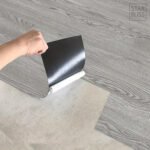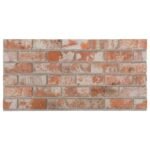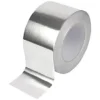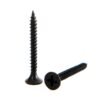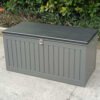The Ultimate Guide to Insulation Rolls: Benefits, Types, and Installation Tips
Is your home feeling too cold in winter and too hot in summer? Are your energy bills higher than you’d like? If so, it may be time to upgrade your home insulation. One of the most popular and effective ways to insulate your space is by using an insulation roll. Whether you’re renovating, building a new home, or just looking for ways to make your living space more comfortable, insulation rolls are a great option.
What is an Insulation Roll?
An insulation roll is a flexible, blanket-like material designed to reduce heat transfer inside your home. It helps keep warm air in during the winter and prevents heat from entering during the summer. These rolls are typically made from fiberglass, mineral wool, or foam and come in varying thicknesses and widths to suit different construction needs.
Unlike other types of insulation, insulation rolls are easy to handle, cut, and install, making them a favorite among DIYers and professional contractors alike. If you’re looking to improve energy efficiency and cut down on heating and cooling costs, using insulation rolls is a great place to start.
Benefits of Using Insulation Rolls
1. Enhanced Energy Efficiency
One of the biggest benefits of insulation rolls is their ability to improve energy efficiency. By trapping heat inside during cold months and keeping it out during warm months, insulation reduces the amount of work your heating and cooling systems need to do. This means lower energy consumption and, in turn, lower utility bills.
2. Cost Savings on Energy Bills
Who doesn’t love saving money? Proper insulation can significantly reduce your energy bill. In fact, according to the U.S. Department of Energy, homeowners can save up to 20% on heating and cooling costs simply by upgrading their insulation.
3. Improved Comfort Year-Round
If you’ve ever felt uncomfortable in your own home due to temperature fluctuations, you know how frustrating it can be. Insulation rolls help maintain a steady indoor temperature, eliminating hot and cold spots in your home.
4. Noise Reduction
Did you know insulation doesn’t just control temperature? It also helps with soundproofing. If you live in a noisy area or want to create a quieter indoor environment, insulation rolls can absorb sound and reduce external noise levels.
5. Environmentally Friendly
By reducing energy consumption, insulation lowers your carbon footprint. Many insulation materials are also made from recycled materials, making them a greener choice for your home.
Types of Insulation Rolls
Fiberglass Insulation
One of the most common types of insulation rolls, fiberglass insulation is made from tiny glass fibers. It’s affordable, non-combustible, and highly effective at trapping heat. Fiberglass insulation is suitable for walls, ceilings, attics, and floors.
Mineral Wool Insulation
Also known as rock wool or slag wool, this type of insulation is made from natural or synthetic minerals. It has excellent soundproofing qualities and is fire-resistant, making it a great choice for homes and commercial buildings.
Foam-Based Insulation
Foam insulation rolls are made from materials like polyurethane or polystyrene. These have great insulating properties and help prevent moisture buildup, which makes them ideal for areas prone to humidity.
Where Can You Use Insulation Rolls?
Attics
Insulating your attic is one of the most effective ways to improve energy efficiency. Heat rises, and without proper insulation in the attic, a lot of warmth escapes during winter, and hot air infiltrates during summer.
Walls
Adding insulation to walls helps maintain indoor comfort and reduces energy usage. Both internal and external walls can benefit from insulation rolls.
Floors
If you’ve ever experienced cold floors in the winter, adding insulation can help. Basement and crawl space floors can be insulated to keep indoor temperatures comfortable.
Crawl Spaces and Basements
Basements tend to be cold and damp. Insulation rolls can help control moisture and temperature, preventing mold growth and keeping the space livable.
How to Install Insulation Rolls
If you enjoy DIY projects, installing insulation rolls can be a manageable task. Here’s a step-by-step guide to help you get started:
1. Gather Your Materials
You’ll need:
- Insulation roll
- Utility knife
- Measuring tape
- Staple gun (for securing insulation in place)
- Safety gear (gloves, goggles, and a face mask)
2. Measure the Space
Measure the area where you’ll be installing the insulation. Make sure to cut the insulation roll slightly longer than needed to prevent gaps.
3. Cut and Fit the Insulation
Use a utility knife to trim the roll to the correct size. Fit it snugly between joists, studs, or rafters.
4. Secure the Insulation
Use a staple gun to attach the insulation if necessary. Ensure there are no gaps, as air leaks can reduce effectiveness.
5. Seal Any Gaps
For even better efficiency, use weatherstripping or caulk to seal any gaps around windows, doors, or electrical outlets.
6. Clean Up
Carefully dispose of any leftover materials, and make sure to wear protective gear throughout the process to avoid skin irritation from fiberglass.
Common Questions About Insulation Rolls
How Do I Choose the Right Thickness?
Thickness is measured by R-value, which indicates thermal resistance. The higher the R-value, the better the insulation. Consider your climate and where you’re installing the insulation to determine the appropriate thickness.
Can I Install Insulation Over Existing Insulation?
Yes, but make sure the older insulation is in good condition and dry. Adding new insulation over wet or damaged material can lead to mold and mildew problems.
How Long Does Insulation Last?
Quality insulation can last 20-30 years or even longer with proper maintenance. Regularly check for signs of wear, such as moisture damage or settling.
Is It Safe to Install Insulation Myself?
Yes, but always wear protective gear, as some materials (like fiberglass) can cause skin irritation. If you’re unsure, consider hiring a professional for the job.
Final Thoughts
Insulation rolls are an affordable and effective way to improve your home’s energy efficiency, comfort, and overall sustainability. Whether you’re looking to lower your energy bills, soundproof your space, or create a more comfortable living environment, adding insulation rolls is a smart decision.
When selecting an insulation roll, consider factors like thickness, material type, and installation location to ensure you get the best results. A little effort now can lead to years of comfort and savings!
Have you installed insulation rolls in your home? Share your experience in the comments below!

